Ed. note: This article is periodically updated to reflect the current price of most valuable coins.
In Coleccionistas de Monedas, we fight against the misinformation surrounding the world of coins on the Internet. For this reason, our articles are entirely written by people, not AI or other automated systems. Additionally, we link to all sources and references for coin prices, with the goal of providing you with real, updated, and reliable information.
How do we verify coin prices and values?
At Coleccionistas de Monedas, we are committed to providing accurate, trustworthy, and well-sourced numismatic information. We understand that articles about coin values can influence important financial decisions, which is why we apply a clear and rigorous methodology to estimate prices.
Sources used
- PCGS Price Guide: The official pricing guide from the Professional Coin Grading Service.
- NGC Price Guide: Updated valuation system from the Numismatic Guaranty Company.
- Heritage Auctions: Database of real auction sale prices.
- Red Book: Printed guidebook with historical pricing by grade.
- eBay Sold Listings: Only completed sales are considered, not asking prices.
Validation process
- Price review by condition grade using standard scales (MS, AU, XF, VF).
- Verification of varieties and errors through multiple data sources.
- Expert consultation when prices significantly deviate from the norm.
- Regular updates to reflect current market trends.
Important disclaimer
The values presented in this article are for reference purposes only. Final coin prices can vary significantly depending on authenticity, grade, and selling context. We strongly recommend having your coin certified by a professional service such as PCGS or NGC before selling or purchasing it as an investment.
Lincoln Wheat Pennies are part of the Lincoln Pennies family (here’s a Lincoln Penny values chart 2025) and some of them are one of the most expensive coins in the world.
Lincoln Wheat Pennies, minted from 1909 to 1958, are among the most iconic and widely collected coins in U.S. history. Their distinctive reverse design—featuring two wheat stalks framing the words “ONE CENT”—makes them instantly recognizable. More than just small change, these coins hold tremendous historical and monetary value, with certain rare issues fetching thousands of dollars in auctions. For collectors seeking to understand Wheat Penny value, knowing how to identify key dates, mint marks, and coin grades is essential.
Not all Wheat Pennies are created equal. Key dates such as the 1909-S VDB, 1914-D, and 1922 No D are highly sought after due to their limited mintage and scarcity in high grades. Even more common coins can command strong prices if they are well-preserved, with red uncirculated specimens (graded MS65 RD or higher) often valued exponentially more than their circulated counterparts. Errors and die varieties—like double dies and repunched mint marks—also play a critical role in determining a penny’s market value.
Understanding Wheat Penny value requires more than just spotting old dates. Market demand, coin certification, and proper storage all influence long-term worth. Whether you’re a beginner intrigued by pocket change or a seasoned numismatist looking to expand your portfolio, Lincoln Wheat Pennies offer a fascinating entry point into U.S. coin collecting. Explore detailed pricing guides, mintage data, and authentication tips to make informed decisions and unlock the full potential of your Wheat Penny collection.
If you want to learn about the value of Wheat pennies by year, you can find them listed below. Nevertheless, when it comes to coin prices, having a wealth of details and additional information can be crucial. Therefore, if you have 5 minutes, we recommend reading this article in its entirety.
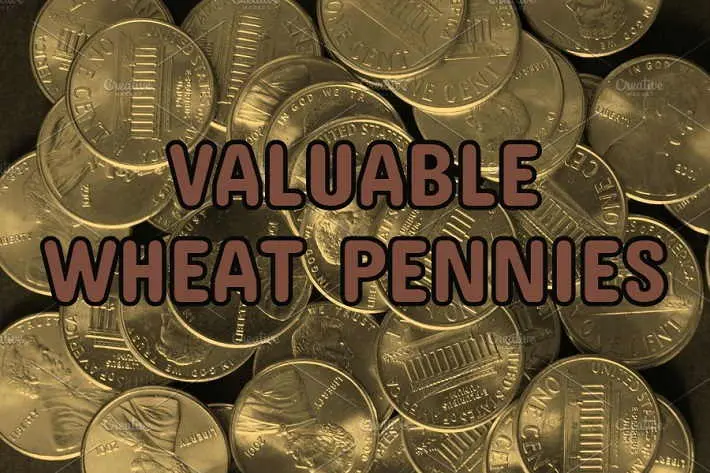
JUMP TO SECTION
Old Wheat penny value chart by year(2025 Update)
Coin collectors often engage in discussions to establish standardized pricing criteria based on gradings by organizations like NGC or PCGS, starting from MS-60 and beyond. In the case of these common and readily available pieces, exceptional quality is highly prized, leading to exponential growth in prices for coins like the Lincoln Wheat Penny. To illustrate, let’s consider a specific example involving a common coin with a face value of 1 cent.
| Lincoln wheat penny values | |||
| Position | Type of Wheat Penny | Key Date | Auction Record |
|---|---|---|---|
| #1 | Bronze wheat penny | 1943 | $1,750,000 |
| #2 | Steel wheat penny | 1944 | $200,000 |
| #3 | 1909-S VDB Wheat Penny | 1909 | $100,000 |
The value of most expensive Wheat Pennies
Are wheat pennies worth anything? These series of American coins, with few exceptions, were minted in incredibly high quantities. Therefore, for a coin to command a high price in the collector’s market or as an investment, it needs to possess one of the following two characteristics:
- Exceptional Condition: It must not have experienced any wear and tear from circulation, and it should be free from nicks or scratches. Ideally, it should be in pristine condition, just as it left the minting press, with a natural weathered patina and uniform color.
- One of the few rare pieces. You may want to watch out for specific aspects of our coin. Keep reading to find out…
How to correctly identify pennies to collect
It has been in circulation for over a century. The motif began to be used in 1909, from a photograph taken of the great President in 1864, and is still in use today.
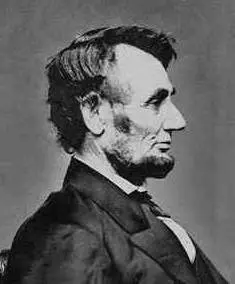
Abraham Lincoln’s bust has been virtually unchanged all these years. However, the motif on the back has changed somewhat. This article focuses on the so-called Wheat Penny, the first guy to be coined from Lincoln’s pennies.
This coin was used from 1909 to 1958 when it was replaced by the Memorial Penny, a coin that depicts the President’s bust on the front side, but completely replaces the motif on the back with an engraving of the Lincoln Memorial Building.
In order to properly reference our coin, we first need to know its mint. In the case of this piece, we have three possibilities.
We need to look at the small lettering just below the year embossment.
Type of U.S. Mint Marks
- Lincoln Wheat Penny no mint mark: If it doesn’t have any letters, it was minted at the main Philadelphia Mint.
- Lincoln Wheat Penny “S” mintmark: If we find an S, it was coined in San Francisco Mint.
- Lincoln Wheat Penny “D” mintmark: If we find a D, then Denver Mint is its origin.
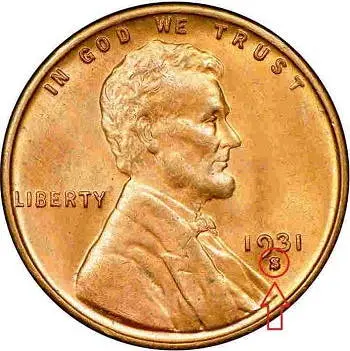
Another feature we must consider is the type of coinage our piece has. As a general rule, the Mint coins have two differing qualities:
- Circulation coins are the normal coins that we use in our daily transactions.
- Coining PROOF coins are made directly for the collector market. They are manufactured in a high level of detail with great care, and this provides them with a characteristic mirror shine, making them more aesthetically attractive.
In the images, we can see a normal circulating one (above), and a PROOF coin (below). The differences between the two are more than clear.
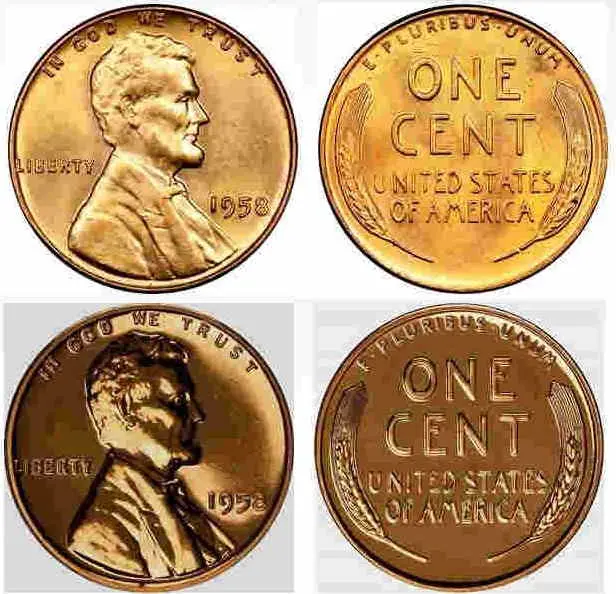
The last parameter to look at when referencing our coin is only necessary on the coins originating from the first year in which they were minted, 1909. The first coins to come out of the mint had the initials of the designer Victor D. Brenner on the back of the coin (VDB).
These pieces are far more rare than their non-VDB counterparts, although they were appreciated and treasured by numismatists and collectors from the beginning. Because of this, it is common to find them in an excellent state of conservation.
List of most valuable Wheat Pennies – Auction Records
1. 1943 Bronze Wheat Penny – $60,000 – $1,750,000
In 1943, due to the entry of the United States into World War II, copper for coinage became necessary for military equipment factories. To replace it, the Wheat cent was minted in a zinc-plated steel coin blank.
However, it is assumed that by mistake, some coin blanks left over from the previous year entered the press in the three mints.
For these pieces, of which about 25 are known in total, and many of them in circulation, hundreds of thousands of dollars can be forked out, including more than a million for the best-preserved ones.
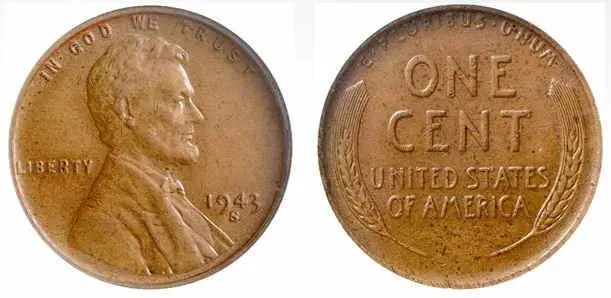
2. 1944 Steel Lincoln One Cent – $7,500 – $200,000
The opposite case to the 1943 bronze coinage is the zinc-plated steel coinage, the 1944 one. In December 1943, it was agreed that these coins would be re-minted in bronze, but some coin blanks were leaked with the new wedges, and very few units were produced in the previous year’s material.
Thing to know
It should be noted that in that year there were a large number of steel coin blanks at the Philadelphia Mint, which were used to mint the Belgian two franc coin. Belgium, a country destroyed by the war, had to subcontract the production of cash to the American Mint. Check out your coin and don’t forget that the pieces of 1945 and 1946 also fetch good money.
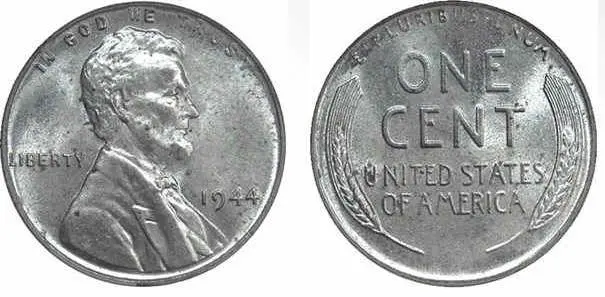
- Do you know our 1944 wheat penny guide? Updated 2025 Prices
3. 1909-S VDB Wheat Penny – $1,500 – $100,000
The first one cent coins minted were produced with the initials of designer Victor David Brenner at the bottom of the reverse. Among these, the rarest are those minted at the San Francisco Mint.
It is important to keep in mind that since the only difference from the normal 1909 Mint coins is the engraving of these initials.
This type of piece is the most counterfeited coin in all of American numismatics. A total of four reverse dies are known for this issue, and we do not recommend you purchase them without a thorough knowledge of them.
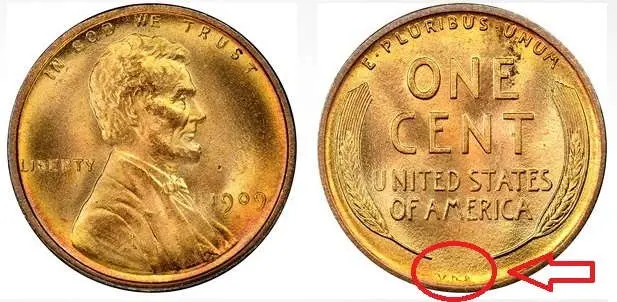
Coins that come out of these three ‘white mirlors’, graduated in MS-60, can cost approximately $25 to $300 in the first years of issue – until the late 1920s. In the 1930s they can be bought for between $5 and $30. Post-Great War, given their mass production, there are few that cost more than $1.
These price ranges apply mostly to coins minted in Philadelphia and San Francisco. The Denver Mint’s production numbers were significantly lower, and therefore coins marked with a ‘D’ can fetch much higher prices than their more common contemporaries.
Most valuable Wheat Pennies – Other Key Years
Look for these years and you won’t regret it – 1919, 1940, 1941, 1942, 1945, 1946, 1956, 1957 and 1958. As we said above, you must take into account that the state of conservation is key to valuing your cent coin.
Are wheat pennies increasing in value?
Wheat pennies, also known as Lincoln cents with the wheat ear design on the reverse, have been a popular collectible coin for many years. The value of wheat pennies can vary widely depending on their condition, rarity, and other factors.
In general, the value of wheat pennies has increased over time due to a combination of factors, including their scarcity, historical significance, and collector demand. However, it’s important to note that not all wheat pennies have increased at the same rate, and some may have decreased in value over time.
For example, standard dates and circulated wheat pennies in poor condition may be worth less than their face value. In contrast, rare or uncirculated wheat pennies in excellent condition can be worth hundreds or thousands of dollars.
Overall, you have a collection of wheat pennies. In that case, it’s a good idea to appraise them by a reputable coin dealer or numismatist to determine their value and potential for future appreciation.
What year wheat pennies should I keep?
Wheat pennies, also known as Lincoln cents with the wheat ear design on the reverse, were minted between 1909 and 1958. While there are some rare and valuable dates in this range, the value of wheat pennies depends more on their condition than the year they were minted.
Some collectors prefer to focus on collecting specific years or date ranges for personal or historical reasons. Some popular year ranges that are sought after by collectors include:
- The early years: 1909 to 1919, which includes the first year of the series and the rare 1909-S VDB and 1914-D pennies.
- The 1920s and 1930s: These decades produced many low-mintage coins, including the 1922 Plain penny, the 1931-S penny, and the 1937-D 3-legged penny.
- The war years: 1941 to 1945, when pennies were made of zinc-coated steel due to wartime shortages of copper.
- The final years: 1956 to 1958, which includes the last year of the wheat penny design.
Conclusion about Valuable Lincoln Wheat Pennies
The Lincoln Wheat cents in general are a series of coins that have as many lovers as haters. As we have mentioned, these one-cent coins are probably the most collected series in the world for several reasons:
- Low difficulty in getting almost all the dates.
- Price is very affordable.
- Easy storage, because there are many albums that have the holes ready to be filled with the coins.
- A large number of specialized bibliographies.
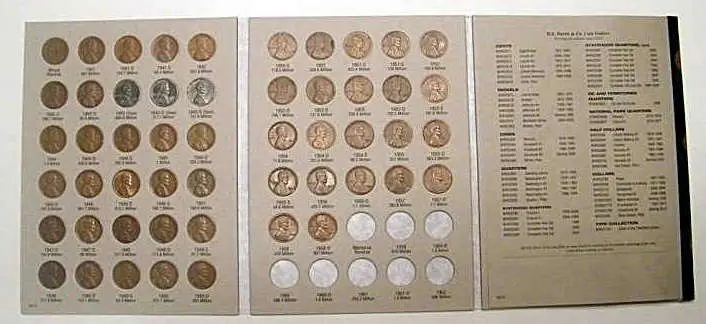
These series are an accessible collection for youngsters who want to start in the world of coin collecting, to advanced collectors with important capitals. In most cases, the former will dedicate themselves to filling in the gaps, as if it were a sticker album; and the latter will seek excellence in all their pieces, trying to get copies in very high states of conservation.
References and sources
- Heritage Auctions, “What’s My Coin Worth?, https://coins.ha.com/ref/price-guide.zx”
- NGC Coins, “NGC Price Guide, https://www.ngccoin.com/price-guide/united-states/”
- The Official Red book 2025, “A Guide Book of United States Coins, https://g.co/kgs/8TcE3yq”
- Wikipedia, «List of most expensive coins, https://en.wikipedia.org/wiki/List_of_most_expensive_coins»
- Yahoo Finance, «9 Rare American Coins That Are Worth a Lot of Money, https://finance.yahoo.com/news/9-rare-american-coins-worth-120155095.html»
- 1942 Wheat reverse penny: things to know.
- 1910 penny: values and how-to.
- 1919 Lincoln Penny guide.
- 1920 Wheat Pennies to look for.
- How to identify a 1964 Penny.
- D Wheat Penny Value: 1952, 1953, 1955, 1957, 1958.
- Are quarters worth money?

